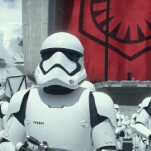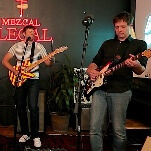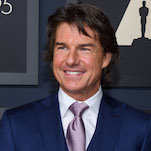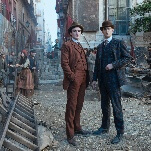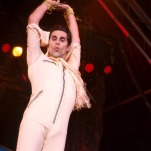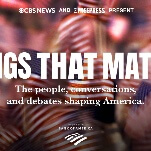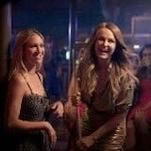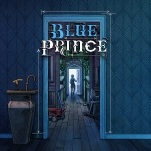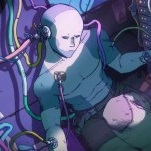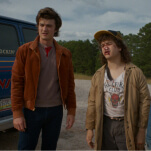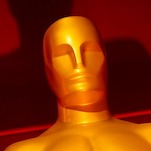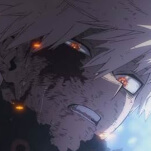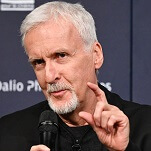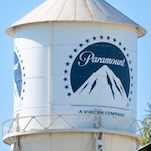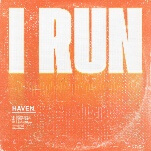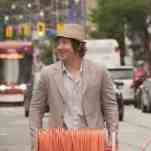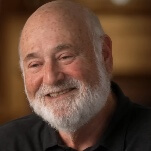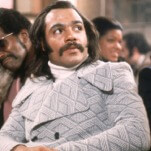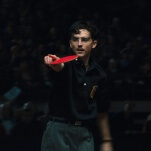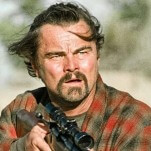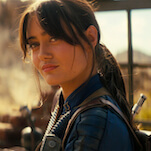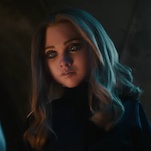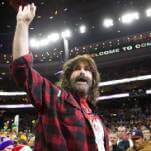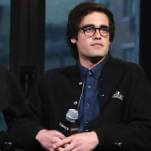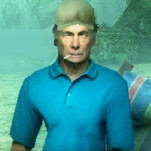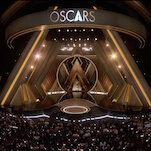In his book-length conversation with François Truffaut, Alfred Hitchcock famously outlined the crucial difference between surprise and suspense. Surprise, he explained, is a bomb suddenly, unexpectedly exploding underneath a table in the middle of a mundane conversation. If you want suspense, on the other hand, simply make the audience aware of the bomb’s presence beneath the table, well before it goes off, so that they’re constantly thinking about it as the characters mindlessly chat. “In the first case we have given the public 15 seconds of surprise at the moment of the explosion. In the second case we have provided them with 15 minutes of suspense. The conclusion is that whenever possible the public must be informed.”
There’s a third option to this scenario, however—one that movies seldom employ, except in small doses. You can inform the characters as well. Granted, if your protagonist is James Bond or Jack Bauer or even Jeremy Renner’s bomb-defusing cowboy from The Hurt Locker—somebody for whom tick-tick-tick is an standard occupational hazard—then you’re still in suspense mode. But let a handful of ordinary Joes know that they’re liable to explode at any moment, and you don’t have 15 seconds of surprise or 15 minutes of suspense, but 150 minutes of pure, unadulterated terror.
Given the nature of the movie, this sequence practically qualifies as frenetic, simply because someone’s actually doing something, as opposed to avoiding doing something, like, say, hitting a bump in the road, or just making a sudden stop. Nonetheless, of the four characters onscreen, three are almost entirely passive throughout, watching and waiting and sweating and praying that the next instant, and the next, and the next, won’t be their last. In a way, they’re in the exact same position we are, albeit with an additional sense of imminent personal doom. They know something disastrous may happen at any moment, but they, like us, can do nothing but observe. (Hitchcock, who had a sort of friendly rivalry with Clouzot—and who actually attempted to purchase the rights to the novel from which Wages Of Fear was adapted—employed the exact same audience-identification tactic the following year in Rear Window.)
Peter Van Eyck, playing the blond dude who pours the nitroglycerin down the hole (having already set in place the hammer that’ll set it off), has a different task: portraying fear held barely in check by purposeful action. Rather than contorting his face (as Charles Vanel does at the end of this clip, in a different context—I’ll get to that), he lets his breathing do most of the work, packing audible anxiety into each exhalation. He also gets the physical details of sustained tension exactly right. Poker players know that a suddenly trembling hand is a reliable sign that a player knows the pot is his: He unconsciously tenses his muscles, awaiting the perfect card, and can’t prevent a tiny spasm when they finally relax. Likewise, Van Eyck’s hands are steady as he pours the nitro, but visibly betray him when he lights his cigarette after the task is finished. (I also love the bit where he starts to pick up the thermos of nitro, then stops for a moment to make the sign of the cross over the hole.)
Even more memorable is the symphony of nervous tics the other three men perform during this process. Montand repeatedly, pointlessly fake-striking his lighter; Folco Lulli chewing the end of his cigar like a cow with its cud; Vanel restlessly drumming his fingers on the truck’s door—Clouzot really does all but fashion a brief musical number from these signifiers, giving the drivers’ collective fear its own percussive rhythm. (It helps that the scene is otherwise completely silent at this point, save for ambient background noise and Van Eyck’s breathing.) Their restlessness also underlines their impotence, further reminding us of our own. Empty, repetitive gestures are all you have sometimes. I recall performing similar routines—squeezing my seat’s cushioned armrest, usually, but tooth-grinding will do in a pinch—during protracted exercises in heightened, maddening stasis like this one. Possibly even during this one.
Finally, the boulder goes up in smoke, though not before it belatedly occurs to Van Eyck that it might not be the world’s most brilliant idea to set off a massive explosion beside rock-strewn hills towering over two trucks loaded with nitroglycerin—in uncovered beds. (Whether Lulli survives the blast, I’ll leave those who haven’t seen the film to discover for themselves.) In truth, that is the kind of detail someone could easily forget—the fellas were careful to move the trucks some distance from the detonation, around a bend, so they’d be safe from hunks of blown-up boulder, but they weren’t thinking about the gravity that put that boulder in the road in the first place. And so they, and we, get to watch a rousing game of Death Pachinko, with small rocks in place of metal balls, and jugs of concentrated kaboom in lieu of pins and holes.
Vanel, playing a guy so paralyzed with fear that he can’t even flee the truck, arguably goes over the top in his depiction of controlled panic, shuddering as if he were in a massage chair on its highest speed, and screwing his eyes tightly shut at each prospective hit. But this is one of those cases where you do need to know what happened earlier in the movie, which spends almost its entire first half establishing this character as an utterly fearless badass of the first degree. He’s comfortable handing his loaded pistol to an enemy and daring him to shoot—and then slapping him hard in the face when he hesitates, and daring him again—yet he goes to jelly at the sight of a small rock tumbling in his direction. That’s the whole point; his exaggerated cowardice in this scene counterbalances the exaggerated machismo seen earlier. If even he can’t handle the stress, this nail-biter of a film implies, what possible chance do we have?


